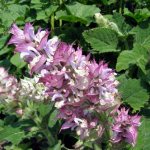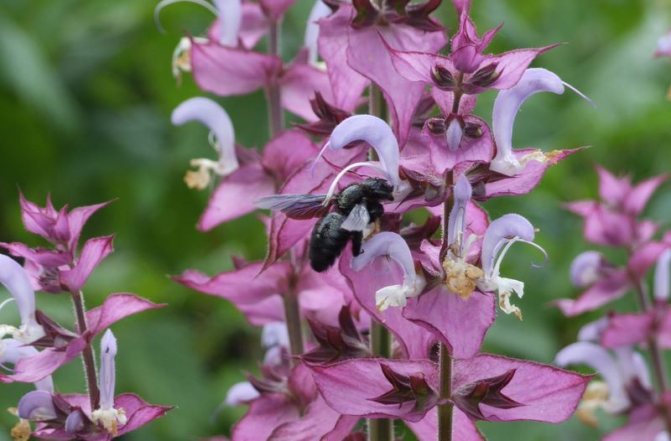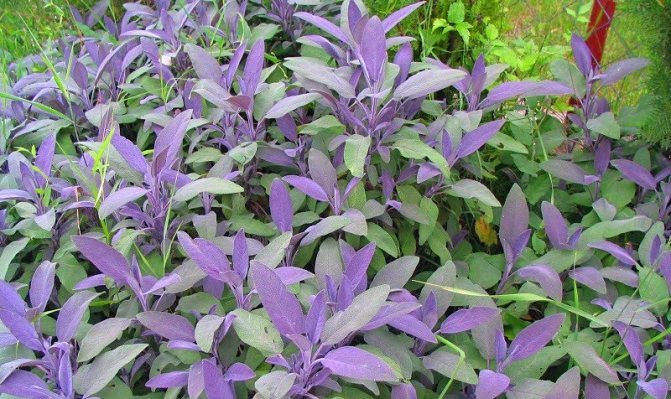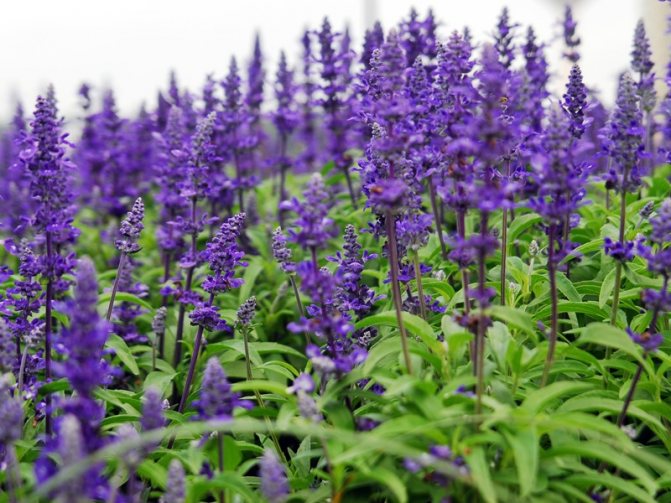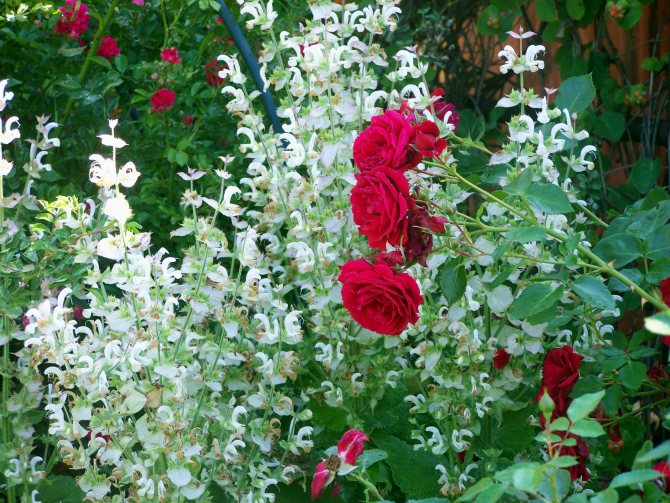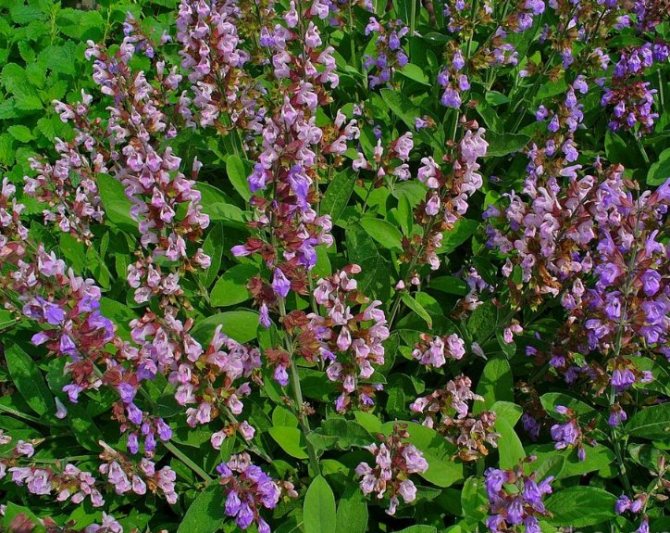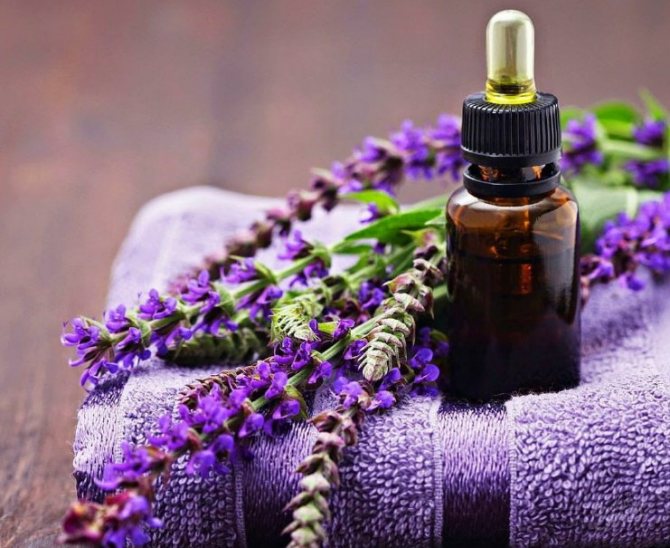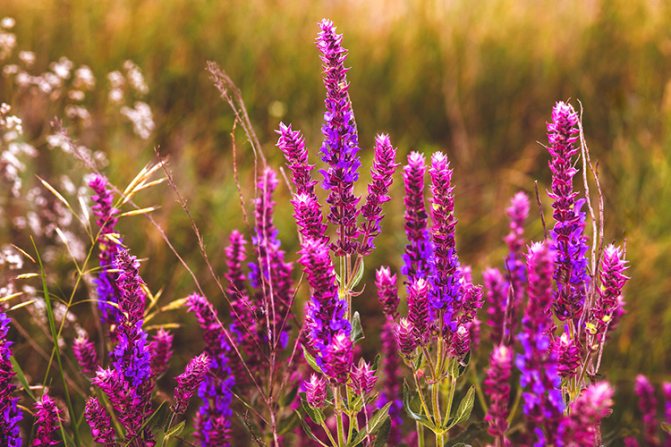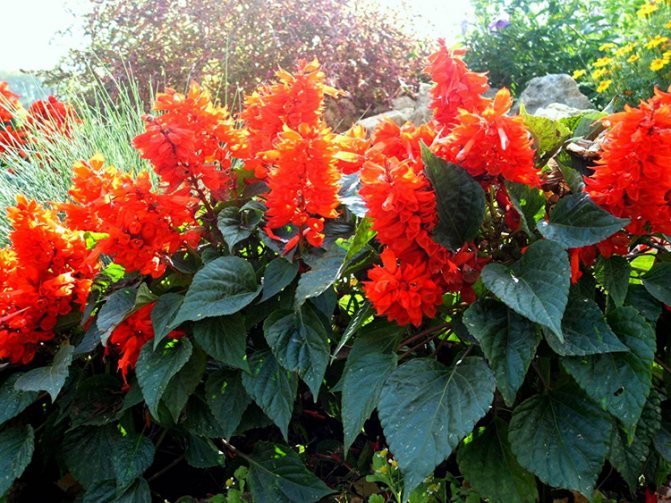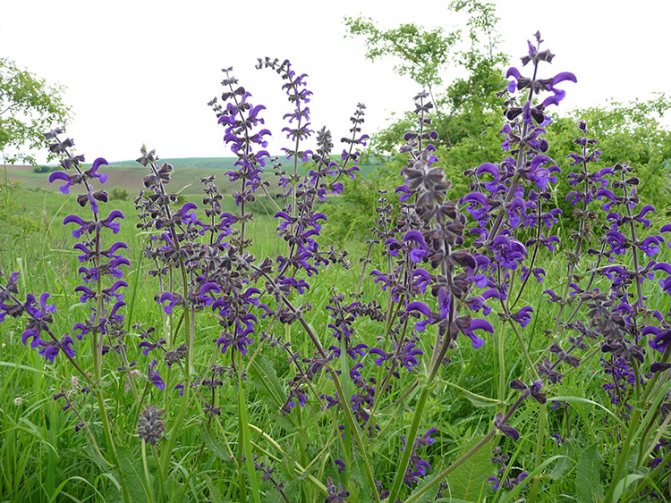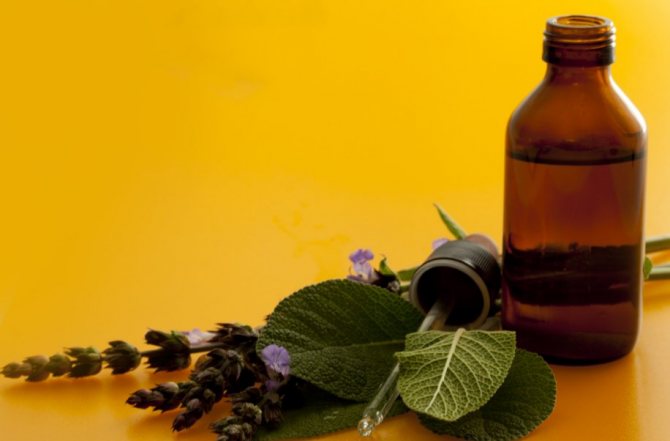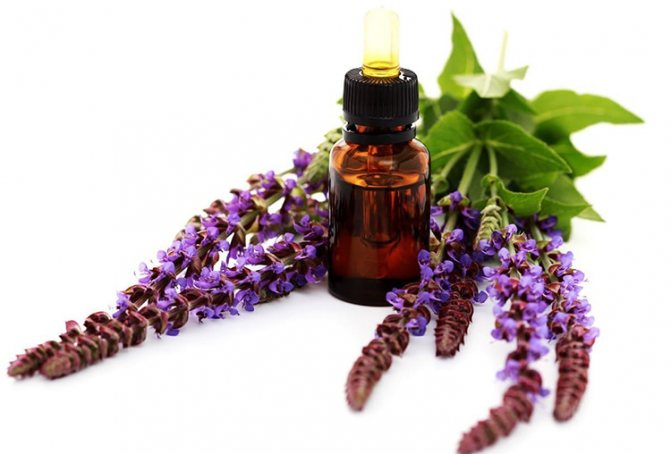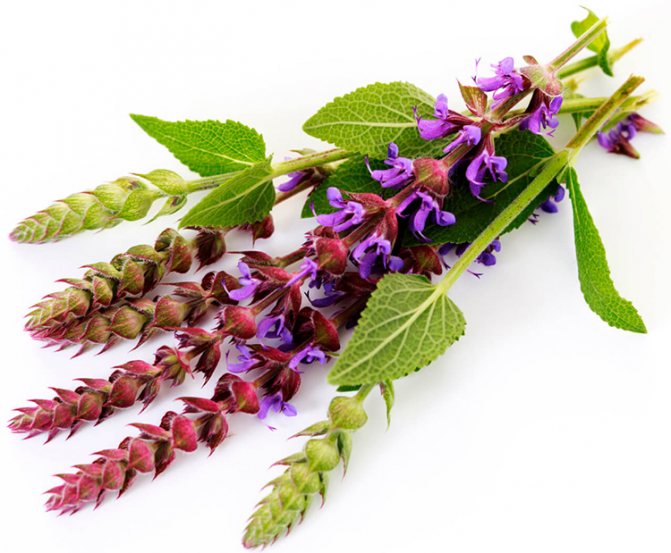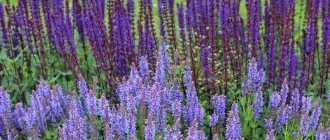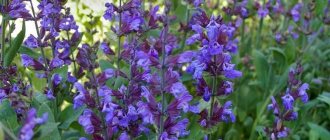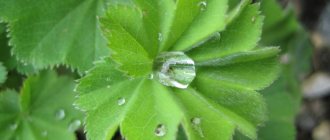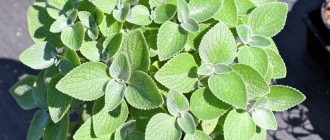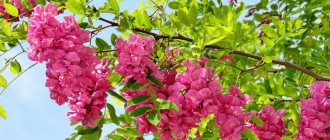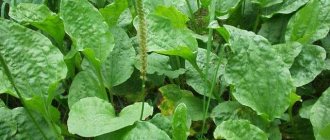It is known that even in the days of Hippocrates, sage was widely used in medicine because of its medicinal qualities. However, as a culture, it began to be grown in 1909 in Europe.
In the wild, this herb grows in southern Europe, Western and Central Asia and the Caucasus. It has been cultivated in our country since the end of the twenties of the last century.
The cultivation of sage for the national economy is carried out in order to obtain essential oil. It contains large amounts of linalyl acetate, linalool and other beneficial substances. Sage oil and processed products are widely used in the perfumery and cosmetic, food and pharmaceutical industries.
Description of clary sage
This plant has a very powerful root system, reaching up to 1.50 meters in depth. The straight stem of a tetrahedral shape sometimes grows up to one meter in height. Branches diverge from the stem, at the ends of which long and spreading panicles grow... Sage leaves are strongly wrinkled in the form of a large oval. Closer to the apex, the leaves turn into pink small bracts. The leaves and stem are covered with downy hairs. Clary sage photos can be viewed on medical and horticultural sites.
During flowering, sage is covered with pink or white flowers. This happens from June to August. After flowering, fruits appear similar to nuts. The plant has a powerful and fragrant aroma. From July to September, the leaves are harvested for further drying for storage. Plant propagation occurs as a result of self-seeding.
Procurement and storage
All parts of clary sage are medicinal and are used in cooking for pickles and sauces, hot drinks.
Collect the leaves before and during flowering. After flowering, the leaves and stems become more rigid and unsuitable for harvesting. When dried, the sage aroma is enhanced.
Clary sage is dried for the winter, like all medicinal herbs, in a well-ventilated room, where direct sunlight does not fall on it. True, it is better to store finished raw materials not in bags, but in glass jars in order to preserve healthy oils. ________________________________________________
Try recipes for healthy and delicious herbal teas ________________________________________________
Dried raw sage can be added as a condiment and brewed into a fragrant, healthy tea. Sage has astringent, antiseptic, hemostatic properties. Herbal tea with sage is suitable for additional treatment and prevention of diseases of the oral cavity and digestive organs. Essential oils disinfect and moisturize the skin, help restore and regenerate the skin.
Growing methods on the site
There are three ways to grow this plant.
- Planting seeds in the ground... Sage can be planted in any type of soil, but it is advisable to fertilize it before planting seeds. The seeds must first be germinated to improve the germination result. Sowing is carried out in the spring, with the onset of warm days. At a distance of 0.5 meters between each other, we make grooves 3-4 cm deep. We spread the seeds on the bottom of the grooves at a distance of 10-15 cm between ourselves. Then, fall asleep with soft earth and water well.
- Growing seedlings... It is necessary to start growing seedlings in early spring. Before planting seedlings at home, clary sage seeds should be treated with a solution of the growth stimulator "Energen". For this, seeds in a gauze bag are placed in this solution for a day. Then, after drying them a little, we plant them one at a time in a peat pot. Planting in the ground is carried out directly in pots so as not to damage the root system.
- Reproduction by dividing the bush... This method is used at the end of summer. To do this, dig up a sage bush and divide the root system with a knife or shovel. Before planting, the roots are treated with a fungicide. Then new plants are planted in a permanent place on the site. Young plants must be covered before winter begins.
Let's take a quick look at the methods of caring for this plant.
Clary sage: photo
Description of the plant
Clary sage is most often a shrub species, the height of which is about 1 m or even more. The stalk of the sage is usually erect and partly stiff. The whole plant, down to the inflorescence, is covered with special curly hairs.
The sizes of the leaves in different parts of the stem differ significantly from each other. The lower and middle stems have rather large leaves (from 5 to 32 cm). The width of each plate is almost the same as the length. Its shape is generally ovoid or oblong. Often there are options when the leaf has a pointed end that is not inherent in this species. The edges of each leaf are not even, but slightly gnawed-toothed. Any plate is attached to its petiole, so they cannot be called sedentary.
Basal leaves are much smaller. Most often, they dry out very quickly and disappear. The uppermost leaves are also slightly smaller than the middle ones and are located on short petioles, in contrast to the lower ones.
Experts call the sage inflorescence paniculate-branched. It is usually composed of 2-6 false whorls. The calyx of each bud is small - from 12 to 15 mm, so the inflorescences do not look too flashy. The wreath is usually at least 3 times longer. The color scheme is not very diverse. There are white, pink and lilac crops. The upper lip of each individual flower is crescent-shaped. The lower one is composed of two fused petals, which are usually twisted on the sides.
Eyebright herb: medicinal properties and contraindications

This is a very interesting culture and it grows mostly in the countries of Central and Southern Europe, Western Asia, as well as in the Caucasus.
The fruit of sage sage, medicinal and even nutmeg is a nut, the size of which is no more than 2-3 mm in diameter. The plant blooms in May or early summer, it all depends on weather conditions. The first fruits begin to appear in August.
The root of this type of sage is quite strong, even strong gusts of wind are not an obstacle to its further growth.
Care rules
The leaving process does not take much time.
- Weeding and watering... Sage bushes should be weeded thoroughly, as they do not like sow thistles, bittersweet, wheatgrass and other types of weeds. Weeding should be combined with watering the bushes. It should be taken into account that this plant does not require abundant watering, it tolerates drought well.
- Top dressing... The plant is fed three times a season with a solution of "Effekton-O" or "Agricola-Vegeta".
- Thinning... If the bushes grow too close to each other, then they should be trimmed based on the condition of 25 plants per 1 sq. m. If this is not done, then the plant very quickly loses essential oil. Too sparse shrubs are also unacceptable because lateral shoots are lodged.
- Protection against diseases and pests... The most dangerous disease of this plant is scleritinosis. To avoid the occurrence of this disease, you should not plant it too thickly.It is also often affected by powdery mildew. Serum treatment helps to successfully fight this disease. Among the pests there are spider mites, false conductors, etc. In this case, the plant is processed by karbofos.
Growing and caring for a plant
Experts say that clary sage is not a very picky species that does not require special conditions for normal growth. This culture, despite its thermophilicity, can successfully multiply and become a biennial even in the middle lane with an already cool climate.
As a rule, clary sage varieties are propagated by seeds. This is the easiest way to grow this crop. The sowing process should take place either in winter or at the beginning of spring (deadline). If you have grown this type of plant, but in the first year did not see flowering, and as a result, no seeds, then you should not worry: this is a normal phenomenon. Already next season you will get a full-fledged culture.
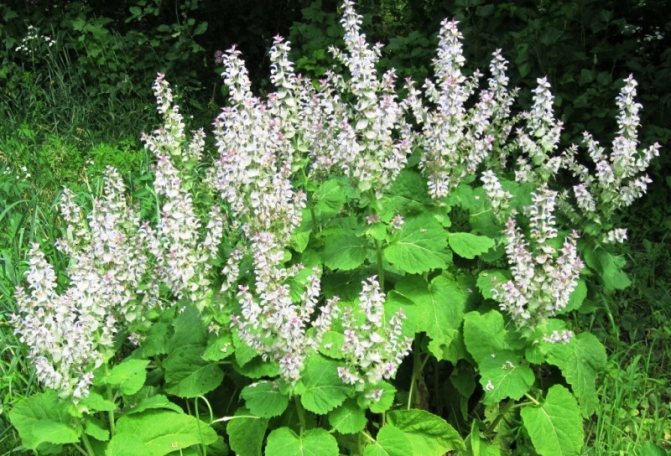

The first shoots are quite resistant to low temperatures and feel great even at + 6 ... + 8 ° С. Adult plants, at the same time, are able to withstand even a not too snowy winter.
During the second year of life, the plant immediately begins to vegetate around the middle of spring. The first bloom appears in June. Then the sage throws out a long branch, the height of which can even reach 1.5 m. Each bud is collected in an elongated spike-shaped inflorescence. Since the plant contains essential oil, or to be more precise, its excess, all its leaves are very sticky. The smell of this mass is very intoxicating and resembles the aromas of East Asia.
On the benefits of healing in a three-part series
Damaged or dead leaves and inflorescences must be carefully removed as they appear. It is imperative to monitor such dynamics, since subsequently, improper care may deteriorate the oil contained in them.


Experienced gardeners advise planting clary sage exclusively in well-lit areas. This does not mean that it will not take root in the shade, just thanks to the right choice of place, you will be able to grow a really large and densely flowering shrub.
And, of course, at least before flowering, one must not forget that sage requires a sufficient amount of moisture. This should be monitored regularly.
The healing properties of the plant
Even in ancient times, the medicinal properties of this plant were widely used in the treatment of various kinds of inflammatory diseases. It has also been successfully used to treat diseases of the female genital organs. Adding it to wine allowed the priests to fall into nirvana, during religious ceremonies. Its scent has been proven to have a calming effect on the human body. Back in the 16th century, recipes for tincture of sage seeds were described, which relieved inflammation of the eyes.
Modern scientists have proven that this plant is similar in structure to female sex hormones. This explains why women use sage to increase their chances of getting pregnant. The essential oil is very helpful in wound healing. Its effectiveness is sometimes compared to Vishnevsky's ointment. The oil also helps in the treatment of oral diseases such as stomatitis and gingivitis. Essential oil of high concentration is used for diseases of the musculoskeletal and peripheral nervous system.
The healing properties of clary sage also include a positive effect on the human circulatory system. As part of herbal is a plant helps with diseases such as hemorrhoids, varicose veins, etc. Essential oil is widely used in skin diseases, and also helps to eliminate acne, dandruff and prevents hair loss on the head.
Plant advantages and disadvantages
We grow sage in the country
Clary sage is an almost ideal plant. There are, of course, some nuances that must be taken into account when breeding this crop. Below are the main pros and cons of the plant, after studying which everyone will understand whether he likes this plant or not.
| Benefits | disadvantages |
| Clary sage has medicinal properties. The main ones are: antimicrobial action, pressure reduction, removal of vasospasm, wound healing, treatment of burns and trophic ulcers. Sage ointments are used to treat psoriasis. | This plant is attacked by 40 species of insects. The most |
| common, among which are powdery mildew, bear, sage weevils and ticks, winter scoop. All of them do not mind eating sage, but the sage mosquito is a real threat to the culture, which is capable of destroying entire plantations of this plant. | |
| The plant can be used for decoration. It can be used as a background crop against a background of low plants, as well as planted along the edges of the curb. | It is necessary to exterminate pests only with the help of gentle biological agents, since strong chemicals can cause serious harm to human health. |
| Undemanding in terms of care, because it does not need frequent watering. | Clary sage is not recommended for use by pregnant and lactating women. There are also contraindications for its use for people who suffer from nervous disorders, or have serious problems with the work of internal organs. |
| Can easily survive the winter. It will be enough to cover it with dry leaves. | Since sage causes a feeling of relaxation and pleasant fatigue, it should not be consumed before a long drive. |
| Clary sage is a perennial plant, although it bears great resemblance to its annual relatives. | It prefers well-lightened places, so the culture should not be planted somewhere in the shade among the trees. |
| It is popular in scientific and folk medicine, as well as in the wine-making, culinary and perfumery fields. | |
| In cooking, clary sage is used both fresh and dry. Young leaves are popular as spices for salads, vegetable and fish dishes. In dry form, the plant also retains its useful properties, therefore it is harvested for seasoning the first and second courses. Culture not only gives food a flavor, but also adds a bitter-spicy note. |
As you can see, clary sage is a unique plant that won't be a hassle. And it will definitely take its rightful place in a flowerbed or garden bed in the country. The main thing is to take into account the recommendations given and take care of it.
Application in traditional medicine
In folk medicine, this plant is used in the form of various tinctures and tea infusions. So, tea brewed on sage flowers and seeds has the ability to stop profuse sweating and its effectiveness can last up to 1 day. Tea also helps with bronchial diseases and kidney inflammation.
This plant helps with diseases of the gastrointestinal tract and liver, even if you just chew dried leaves. If smoking sage leavesthen it will help with bronchial asthma. Tea is prepared in a very simple way using conventional technology. Two teaspoons of dried flowers and seeds are poured into a glass of boiling water and infused like regular tea.
Salvia officinalis
Salvia officinalis
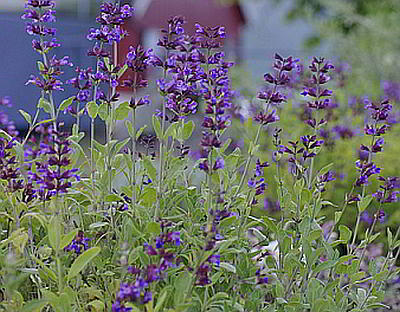

- perennial shrub up to 50 cm high with a powerful woody root and numerous densely leafy stems. Leaves are opposite, oblong (up to 6 cm long), pubescent, grayish-green. The stem and branches end in whorled flowers. The flowers are blue-violet, two-lipped, bloom in June. The seeds ripen in July, they are round (up to 3 mm in diameter), dark brown, almost black.
Salvia officinalis is a heat-loving and drought-resistant plant that does not require special growing conditions. Grows in any humus-rich drained soil. Propagated by seedlings, cuttings and dividing the bush. Seeds remain viable for three years. Seeds can be sown outdoors in spring and autumn, but sage is best propagated by seedlings. I sow them in boxes in early spring, water them with a weak solution of potassium permanganate, then cover the box with glass and wait for the shoots, periodically removing the glass for airing. If necessary, I moisten the earth. Seedlings appear in 12-20 days, they are usually weak and very fragile. Before transplanting into open ground, they need to be watered several times with weak potassium permanganate and ash infusion. I transplant seedlings into open ground in mid-May, very carefully. In the first year, the plants develop slowly, but with age, many new shoots grow, which lignify in the lower part. The bush gradually grows in breadth, therefore I plant medicinal sage in a permanent place according to the scheme 50x50x50 cm. In one place, sage grows for 4-6 years. Caring for the plant is reduced to regular weeding, loosening row spacings and feeding with slurry (1:10) at the beginning of regrowth and during the budding period.
In official and folk medicine, only sage leaves are used, which contain a lot of essential oils, alkaloids, flavonoids, resins, tannins and other substances. Leaves are harvested 2-3 times over the summer, the first time at the beginning of flowering, and the last time no later than September.
Sage in folk medicine
In scientific medicine, medicinal sage is used for rinsing the mouth with stomatitis, throat with catarrh, in the form of lotions in the treatment of wounds and ulcers, and also internally in the treatment of tuberculosis. Traditional medicine uses this plant more widely: as an expectorant for acute respiratory infections, for inflammation of the renal pelvis and gallbladder, for the treatment of gastrointestinal diseases (including stomach ulcers), for flatulence, diarrhea, nasal and hemorrhoidal bleeding, rashes. Sage reduces the secretion of sweat and mammary glands, stops inflammatory processes, acts as an active antibiotic, has anesthetic, hemostatic, anthelmintic, bactericidal properties.
The broth is prepared as follows: 1 tbsp. l. dry crushed sage leaves pour a glass of boiling water, leave for 45 minutes, strain and take 1 tbsp. l. 3 times a day. Reception is limited. In cooking, dried sage leaves are used in small quantities (pinches). They are added to salads, sauces, herring marinade, minced meat, pates, fillings, gingerbread cookies, cookies, tinctures.
Carp with sage (Czech cuisine)
Required: 1.5kg of carp, salt, ginger, sage, flour, sunflower oil, garlic. Cut the peeled carp into pieces (1.5-2 cm). Season with salt, sprinkle with ginger, grated garlic, salt, add a pinch of sage, roll in flour and fry in oil. Serve potatoes as a side dish.
Sage species: variety and features
Sage is a herbaceous perennial, and all over the planet there are many species of this plant, and, accordingly, their varieties. But the following types are most common:
- Dubravny;
- Drug;
- Lugovoi;
- Muscat.
These herbs are used to make medicines that are most popular in reproductive gynecology. Sage decoctions should be drunk by women diagnosed with infertility. In addition, sage and the collection in which it is included help in the treatment of acute respiratory diseases. And of course - a spice made from finely crushed flowers of this herb. It will add a bright taste to any meat dish.
Important: depending on the variety of clary sage, the properties of the essential oil obtained from it will differ. Hallucinogenic varieties are rarely used for medical purposes, and in our region are legally prohibited from cultivation.
Healing properties of clary sage root and oil
Using salvia oil is safer than herbal esters. This effect is explained by the fact that it contains a minimum amount of thujone, a substance that can cause food poisoning and seizures. Therefore, sage oil is widely used for medical purposes for inhalation of baths, compresses, gargling, antiseptic treatment of skin mucous membranes. Salvia oil has the following pronounced effects:
- bactericidal
- antiseptic
- antispasmodic
- diuretic
- anticonvulsant
- calming
- wound healing
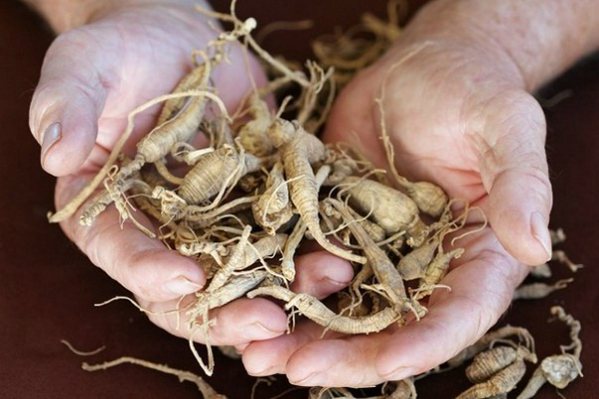

Sage root is used to prepare various decoctions and infusions.
The medicinal properties of sage oil are used for the prevention and treatment of diseases of the respiratory system. To relieve bronchial spasms, the oil is used in the treatment of acute bronchitis and asthma attacks. Syrups and infusions from the plant are effective for sore throat, laryngitis and tonsillitis.
Sage essential oil is recommended for rehabilitation after severe nervous breakdowns and prevention of depression, as it has a calming effect. With the help of it, you can also fight the first manifestation of diarrhea, intestinal colic, and treat inflammation of the gums and teeth. Traditional medicine uses sage oil as a kidney tonic.
Nutmeg oil is also beneficial for women. Thanks to him, you can normalize the endocrine function of the ovaries, the menstrual cycle and prevent the development of infertility.
Sage root is used in a crushed form for the preparation of various decoctions and infusions.
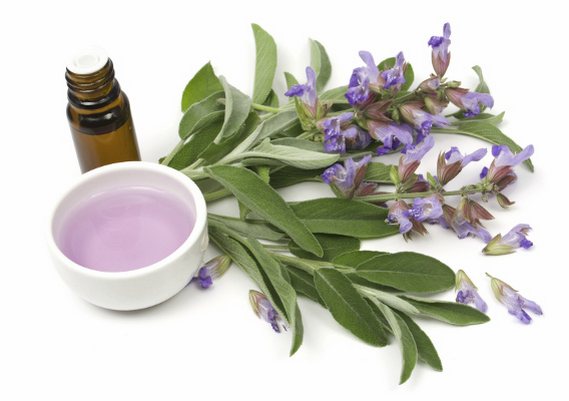

The medicinal properties of sage oil are used for the prevention and treatment of diseases of the respiratory system.
The use of sage herb in cooking
Salvia is a spice, and in small amounts it enhances the taste of fish or meat dishes, vegetables and salads. If you like a little bitterness in your food, adding sage greens will provide you with it.
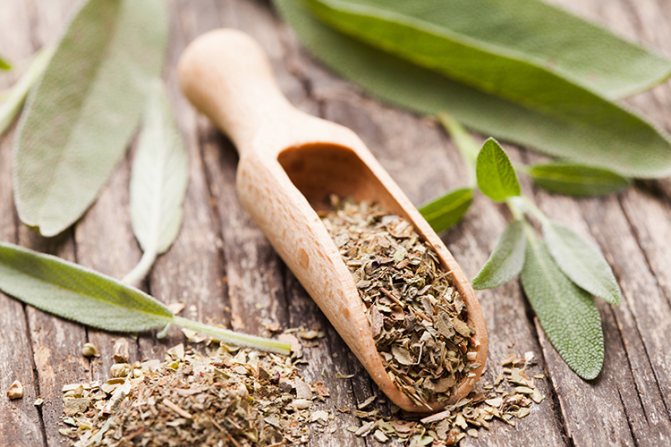

If you overdo it, the dish could be ruined!
Seasoning is added in any form, even frying it. You can add dried herb powder to lard and beer.
Now you know what sage is good for. We would appreciate your comments on the article, especially if you decorate them with recipes for the use of this medicinal herb.
How is sage used in modern medicine?


In the modern pharmaceutical industry, the leaves and herb of clary sage are used, which are rich in aromatic essential oils, flavonoids, tannins and P vitamins. Anti-inflammatory, antimicrobial and hemostatic properties of sage were legendary.
In addition, it promotes the secretion of gastric juice and normalizes sweating. For treatment, mainly herb is taken, from which infusions and decoctions are prepared, but clary sage is generally a storehouse of useful elements. To prepare the infusion, you need to take two tablespoons of the crushed leaves of the plant, pour 500 g of boiling water.
After that, pour into a thermos and leave for one hour. To get a broth, you need to take the same part of the sage leaves, pour boiling water as well and boil for 15 minutes over low heat.
Clary sage in cosmetology
The healing properties of sage are also widely used in cosmetology. It is used as an antiseptic and also as an anti-aging agent to support tissue regeneration. Cleansing and sage infusions are recommended for oily skinas well as acne on the face. For problem hair prone to dryness, it is recommended to rub cosmetic oil into wet hair and scalp.Esters of the plant are used as an antiperspirant for excessive sweating of the armpits.


The healing properties of sage are also widely used in cosmetology.

